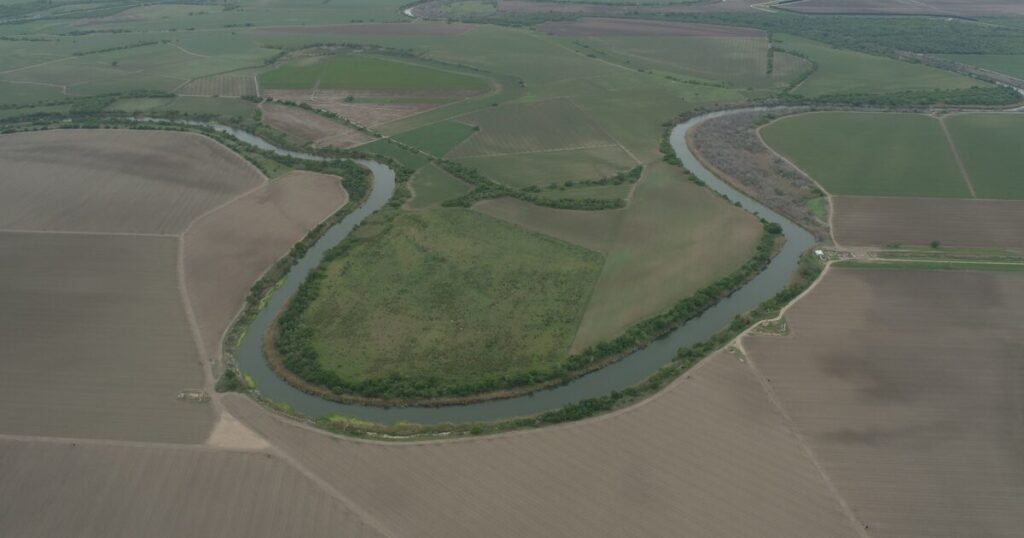Agreement Reached in U.S.-Mexico Water Dispute: Relief for Farmers Amid Drought
After months of intensive negotiations, the United States and Mexico have finally reached a pivotal agreement addressing a longstanding water dispute. This agreement, finalized last weekend, aims to resolve critical water allocation issues that have caused significant strain between the two countries. While not everyone is fully satisfied with the terms, there is optimism that this new framework will provide Mexico with the necessary tools to meet its obligations, ultimately benefiting farmers in South Texas who have been struggling with water scarcity.
Background of the Dispute
The tension surrounding this water dispute escalated dramatically earlier this spring, resulting in U.S. lawmakers threatening to withhold federal funding to Mexico. Cooler heads ultimately prevailed, yet the urgency of the situation remains clear as water becomes an increasingly scarce resource. Effective management of water resources will become paramount as both nations continue to grapple with the challenges posed by climate change.
The 1944 Water Treaty
Central to this ongoing issue is the 1944 Water Treaty, which mandates that Mexico deliver 1.75 million acre-feet of water from the Rio Grande to the United States within a five-year cycle. As it stands, Mexico is required to deliver an additional 1.3 million acre-feet by October 2025. While this treaty plays a crucial role in sustaining agricultural practices in Texas, Mexico is facing severe drought conditions and water shortages that complicate fulfillment of these obligations.
Impact of Climate Change
Both countries are contending with the dire realities of climate change. In Mexico, drought has exacerbated water scarcity issues, affecting major cities and leaving 24% of Mexican households without daily access to water, according to a recent official report. Conversely, delays in water delivery from Mexico have led to devastating consequences for farmers in South Texas, who rely heavily on this water for irrigation.
New Agreement Highlights
According to the International Boundary and Water Commission (IBWC), the federal agency responsible for overseeing the treaty, the recent amendment introduces several modifications aimed at facilitating compliance. The agreement allows Mexico to meet its water delivery obligations through water stored in the Falcon and Amistad reservoirs along the Rio Grande. Additionally, it permits Mexico to utilize water from the San Juan and Alamo rivers, sources that were initially excluded from the treaty’s original framework.
Farmers’ Hopes and Concerns
Farmers in South Texas are cautiously optimistic about the prospect of receiving necessary water supplies for upcoming planting seasons; however, skepticism persists. The complexities surrounding the 1944 Water Treaty have historically led to disputes and will likely continue to do so in the future.
Regulatory Challenges
Texas regulatory measures further complicate matters. The Texas Commission on Environmental Quality (TCEQ) has raised legal concerns regarding the equitable distribution of water resources. This has impeded the state’s ability to accept water from the San Juan River for agricultural use, leaving farmers in a precarious position.
Path Forward for Texas Farmers
Texas Governor Greg Abbott has the authority to direct the TCEQ to facilitate the transfer of water resources to the Rio Grande Valley, potentially alleviating some of the difficulties faced by farmers. However, several legislative measures would be necessary to ensure sustained access to these water supplies. As noted by Dante Galeazzi, president and CEO of the Texas International Produce Association, state-level action is critical in this respect.
Looking Ahead
Given the ongoing challenges posed by climate change and persistent drought conditions, this recent agreement is unlikely to be the last on water-related issues between the U.S. and Mexico. Vigilant, thoughtful negotiation will be key in maintaining amicable relations and ensuring effective water management strategies on both sides of the border.
For additional information regarding the implications of this agreement and ongoing water management initiatives, please explore the following resources:
By fostering cooperation and understanding, both countries can work toward effective solutions that benefit their citizens and agricultural sectors while addressing the profound challenges posed by diminishing water resources.


